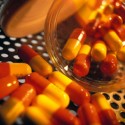Driving After Binge Drinking More Common Than Believed
Nearly one in eight binge drinkers say they get behind the wheel and drive within two hours of drinking, U.S. government researchers report.
The new research adds a timeline and other new information to what’s known about drinking and driving, said study author Dr. Timothy Naimi, a physician with the alcohol team at the U.S. Centers for Disease Control and Prevention. The report is scheduled to be published in the October issue of the American Journal of Preventive Medicine.
“A lot of studies, including ours, have established a strong connection between binge drinking and impaired driving, which is sort of obvious on some level,” he said. “What hasn’t been looked at is how many people actually do get behind the wheel after a binge drinking episode.”
So Naimi and his colleagues evaluated data from more than 14,000 adults in 13 states in 2003 and 14 states in 2004, who reported binge drinking and then answered additional questions. They were part of the Behavior Risk Factor Surveillance System survey.
Binge drinking was defined as having five or more drinks during an occasion, such as an evening out or at a party.
Overall, 11.9 percent of the binge drinkers drove within two hours of their binge drinking, Naimi found.
“It’s a pretty awesome number when you link it up with the number of binge drinking episodes in the U.S.,” he said. According to the CDC, about 1.5 billion binge drinking episodes occur in the United States each year.
“If you were to spread that out [equally among the population], that would be over seven binge drinking episodes per adult per year,” Naimi said.
Two other statistics shed more light on the binge drinking and driving issue, he said. For starters, 50 percent of the binge drinkers were aged 25 to 44. And the binge drinkers were often coming from bars, clubs and restaurants — 54.3 percent of them, in fact. Just 23 percent had been drinking at someone else’s home.
Laws make it illegal for bars, clubs and restaurants to sell alcohol to intoxicated people, Naimi pointed out. But those laws are not well-enforced. “The key thing about this study is, it’s really illustrating the shared responsibility between individual drinkers and the places that are selling them alcohol.”
Another expert, Nick Ellinger, a spokesman for MADD, said one unique aspect of the study is that “‘they looked at the incidence of binge drinking as it related to drunk driving by location.”
If you look only at bars and clubs, he said, one of five binge drinkers who drink at those locations drive afterwards.
The message? Not binge drinking is best, of course. But if you think you may over-indulge, make plans in advance for safe transport home, Ellinger said. “A lot of people drive to bars and restaurants to drink. It’s wise ahead of time to make your plans for how you are going to get home safely because after you have begun drinking that decision-making process breaks down.”
“The research shows that driving after binge drinking is a preventable problem,” said David Jernigan, an associate professor at the Bloomberg School of Public Health at Johns Hopkins University, in Baltimore.
“There are things to do” to remedy the problem, he said, including training servers to stop serving people who are intoxicated and strengthening the liability of club and restaurant owners.
For consumers, planning transportation home ahead of time is crucial, he said. But designated drivers have not been shown to work, he added. “It creates a carload of designated drunks,” he said, some of whom may insist on driving. Public transportation is another, and sometimes safer, option.
source: Health Day News
